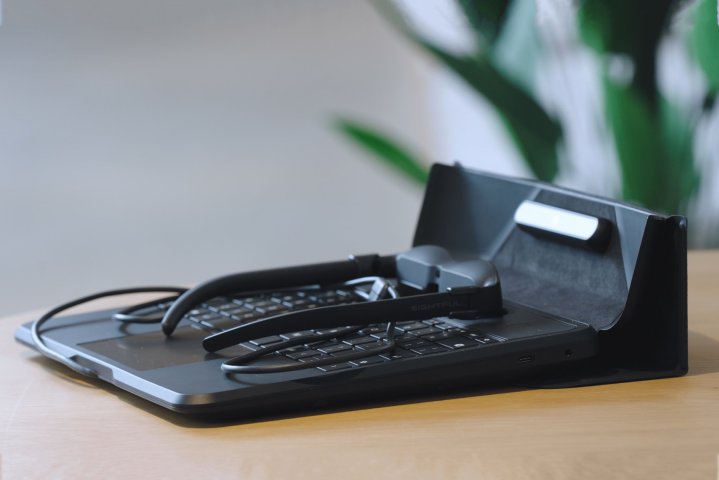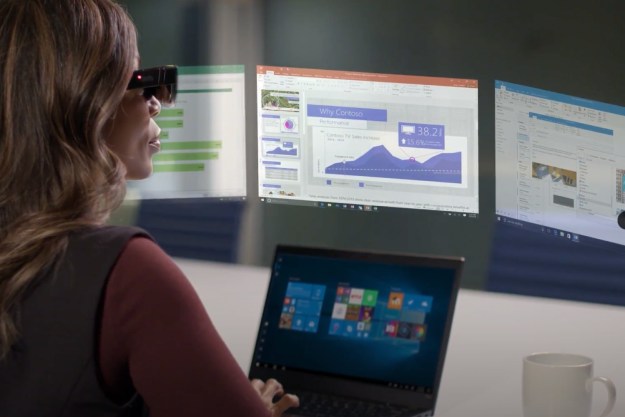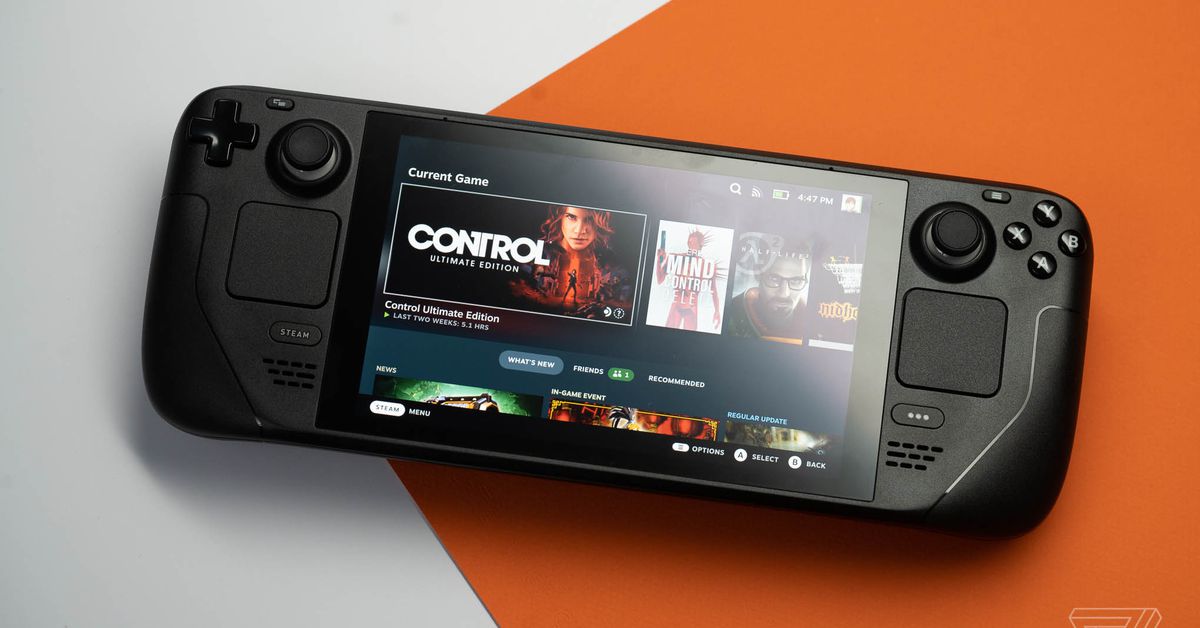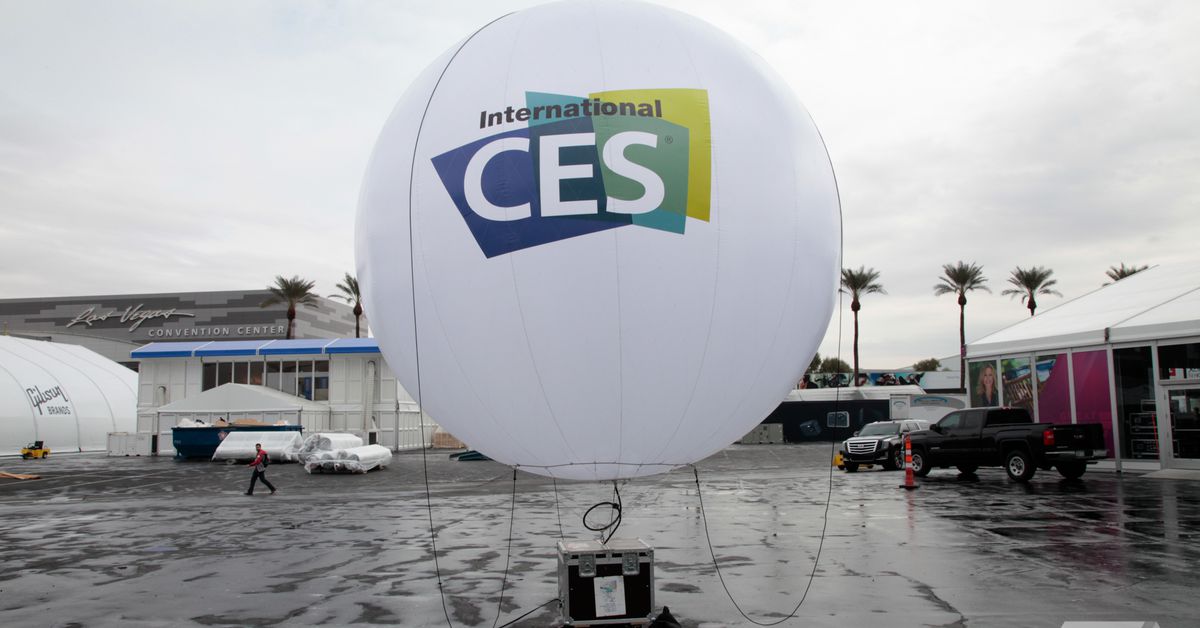This wild, screenless AR laptop gives you a 100-inch virtual display
Looking for a laptop with a bigger screen? Spacetop packs a 100-inch virtual display into a 13-inch laptop body with its wired AR glasses.

 Spacetop’s virtual screens in use at a coffee shop. Sightful
Spacetop’s virtual screens in use at a coffee shop. SightfulOne of the critical factors when buying a new laptop is display size. Do you want a chunky 17-inch model or can you get by with a small and light 13-inch screen? Display size may no longer be relevant in the age of augmented reality, and Spacetop leads the way with the world’s first AR laptop.
Sightful, the company behind Spacetop, points out screen privacy is no longer an issue when working on its 100-inch virtual display. If you take your laptop to the coffee shop and start reviewing sensitive documents, information might leak. With Spacetop, only you see the windows floating in space in front of you.
Spacetop is about the size and weight of a 13-inch laptop. There’s no physical display, but a 5-megapixel webcam is placed on a short backdrop behind the keyboard so you can attend meetings while wearing the wired AR glasses, which look a bit like sunglasses.
 Spacetop’s AR glasses look similar to sunglasses. Sightful
Spacetop’s AR glasses look similar to sunglasses. SightfulThe AR glasses are made by Nreal and feature a 53-degree field of view and 1080p per eye resolution, with 6 degrees of freedom (6DoF), allowing screens to be fixed in space around you. The AR glasses include speakers and a microphone. There’s also a dock at the rear to store the AR glasses when you fold up Spacetop for travel. That makes the folded height about an inch and a half, while the footprint is just 10.5-by-9.8 inches. The weight is 3.3 pounds.
It’s an intriguing approach, but performance, usability, comfort, and clarity are unknowns that will require hands-on testing. Sightful claims the Qualcomm Snapdragon 865 processor in Spacetop’s Early Access model provides good performance for AR use but admits it’s not a gaming device.
 Spacetop is an AR laptop with no physical screen. Sightful
Spacetop is an AR laptop with no physical screen. SightfulSpacetop has 8GB memory, 256GB storage, and two 10Gbps USB-C ports that support PD 3.0 and DisplayPort 1.4. That means you can connect other devices and even attach an old-fashioned physical display to share a screen with others. Spacetop has good connectivity, supporting Wi-Fi 6, Bluetooth 5.1, and 5G Sub-6, so you can easily travel with this device.
The battery life is estimated at over five hours, and fast charging provides 85% battery in under two hours. While Spacetop’s battery life seems short for a laptop, competing AR glasses and VR headsets with mixed reality, like the Meta Quest Pro, have very restrictive battery lives of two to three hours of use.
Sightful designed Spacetop for people that primarily use web apps, similar to the design ideals of Google’s Chromebook. Spacetop OS (based on Android) is optimized for browser use and allows multiple screens of varying sizes and positions within the virtual 100″ screen for easy reference and multitasking.
Sightful is starting with a limited release of 1,000 Early Access versions of Spacetop, priced at $2,000. This is an actual product, not a Kickstarter campaign, and delivery to early adopters is expected in July.
You can learn more and sign up to be among the first to try the Spacetop on Sightful’s website.
Editors' Recommendations
Here’s when Apple’s AR glasses could finally go on sale Lumus demonstrates futuristic 3,000-nit AR glasses at CES 2023 AR glasses will have a dedicated Qualcomm chip in 2023 Apple’s rumored release of its AR glasses demands patience Meta wants its next VR headset to replace your laptop
Alan is a Computing Writer living in Nova Scotia, Canada. A tech-enthusiast since his youth, Alan stays current on what is…
Lenovo’s ThinkReality AR glasses can project virtual desktops into your eyes
Days before CES 2021 officially gets underway, Lenovo has announced a new pair of AR glasses that may have a particularly useful feature for people working from home. The ThinkReality A3 are a new pair of smart glasses that use augmented reality to project up to five virtual desktops right in front of your eyes.
That's a multi-monitor setup like no other. In a day when we're all fighting for proper workspace at home, it could really come in handy.
Oppo steps into augmented reality with its HoloLens-like AR Glass headset
Microsoft’s HoloLens 2 may have a new challenger next year. Smartphone maker Oppo has announced a pair of augmented reality glasses, and stated they will be released during the first three months of 2020. Oppo’s AR Glass headset is part of an effort to expand beyond only making smartphones, and was revealed alongside plans for a smartwatch and an Oppo-produced mobile processor.
Oppo's AR Glass is similar in design to HoloLens. A visor stretches across the front of the headset, attached to a band which holds it on your head, plus there is a forehead rest to keep it in position. This is not something designed for everyday wear, but more for home and industrial use. At home, Oppo says the AR Glass will be used for augmented reality content and games, while in the workplace, and somewhat less specifically, Oppo sees it being used for augmented reality services. These could include 3D modeling, planning, and design.

 ValVades
ValVades 


































